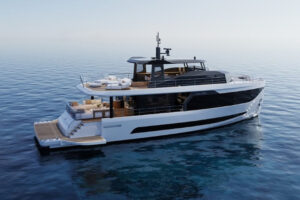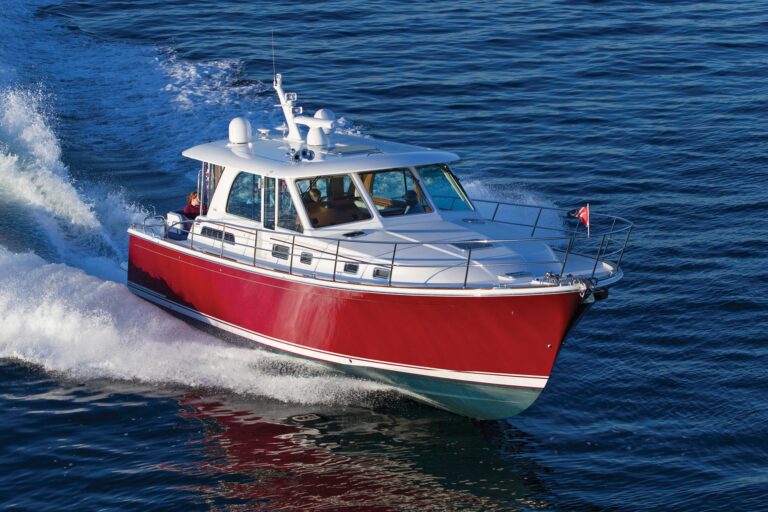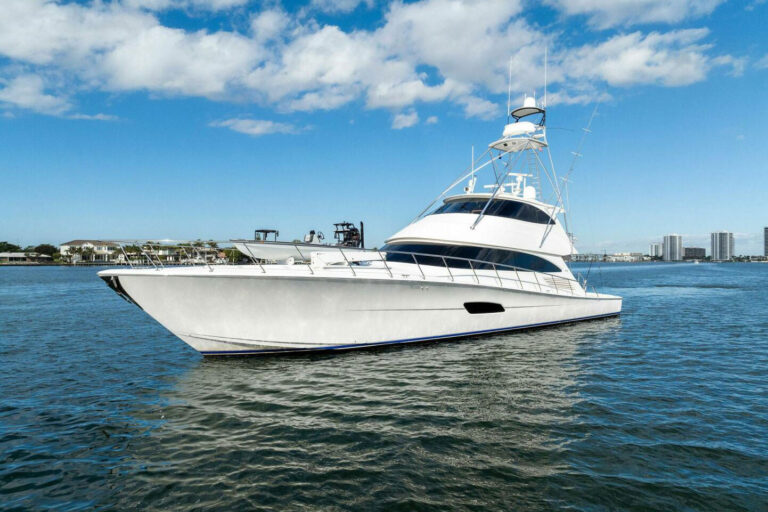Alan Warwick has elevated the art of designing power cats to a level skeptics thought was impossible. Simply getting these boats to look reasonably handsome from a few angles would have been enough, but Warwick’s cats don’t have a bad side or an awkward angle. This 100-foot fast displacement cat is a perfect example.
The sheer mass of any power catamaran is hard to disguise, especially in the short ones. The hulls need a lot of freeboard to provide standing headroom and to raise the wing deck far enough off the water to reduce pounding in rough seas. The superstructure almost always has upright sides and fascia (or nearly so) to allow standing headroom in as much of the saloon and pilothouse as is possible. Cats also are wide for a given length; an LOA of twice the beam is common. The proportions of a cat create an abundance of interior volume, which is one of this type’s most endearing characteristics.
Lengthening a short catamaran changes the looks critics don’t like without compromising the things fans do like. The advantages length grants become most significant beyond 65 feet. At 100 feet and longer, the limitations of the basic design premise disappear.
A 100-foot hull that provides 7 feet of headroom becomes positively sleek. Warwick took advantage of the LOA to extend the bows at an aggressive rake and give them a hint of the clipper shape. In profile, the 100 looks like a conventional motoryacht.
He still had nearly 88 feet of LWL in which to enclose quarters for six crew, machinery rooms, stowage, fuel tanks and the enginerooms.
These hulls also have more buoyancy than short ones. This reduces pitching in heavy seas and makes the cat less likely to stuff her under-wing into a wave.
Length also let Warwick streamline the superstructure. He could relinquish interior volume for the sake of art and produce a trideck arrangement in a very slick profile. My favorite element is the line that rises from the curvature at the terminus of the third deck, reaches its pinnacle near amidships, then sweeps down to the foredeck in a lovely curve. This line complements the tumblehome of the transom and accentuates the thrust of the bridge deck’s fascia.
The Warwick 100 is all about speed and comfort, and to that end her designer drew a pair of slippery hulls. He lists the top speed at 26 knots, which gives the yacht a speed/length ratio of 2.7. Remember that the traditional ratio of a displacement yacht is 1.34. Cruising speed is 18 knots, and Warwick figures on a range of 3,500 nautical miles at 12 knots.
The narrow hulls and modest wave-piercing “bulbs” permit about 2 nautical miles per gallon of diesel at the 12-knot cruise. What’s more, the motion in a seaway will be gentle enough to please a lady.
Contact: Warwick Design, (011) 64 9 410 9620; ; wyd@wyd.co.nz; www.wyd.co.nz.








